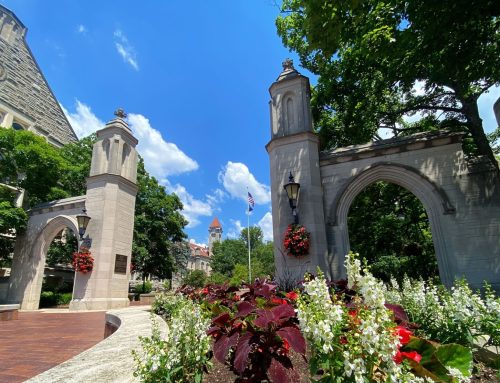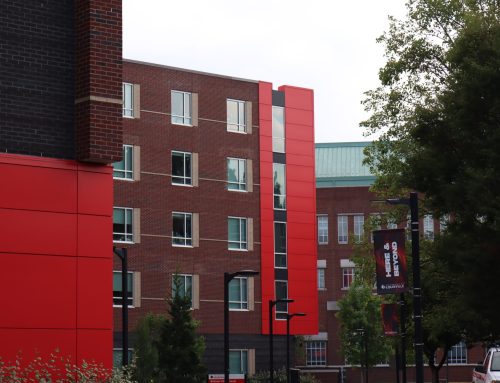By Adam Dahmer–
The majority of political scientists around the globe have reached a consensus: the Troubles, the understated euphemism for the infamous religious violence in Northern Ireland, have once again returned. The armistice forged between Catholic and Protestant paramilitary factions in the last decade of the 20th century, thought at it’s inception to be a lasting peace, has proven only a brief lull in the fighting.
The seeds of the Troubles were sown with the Protestant plantation of Ulster in the 1600’s. During this historical period, Ireland was ruled by the King of Scotland and England; at that time, England and Scotland shared a monarchy, but had separate parliaments. Ulster, the northern-most region in Ireland, was a hotbed of political resistance to British rule. King James VI of Scotland (King James I of England) attempted to consolidate his power in his Irish dominions by confiscating the lands of unruly or traitorous Irish lords and populating the vacated properties with settlers loyal to the crown, which meant that many Ulster natives were forced to abandon their ancestral homes and surrender them to British new-comers. Although King James himself looked favorably on Catholicism, most of his subjects in England and Scotland were die-hard Protestants. The majority of the settlers to Ulster hailed from the lowlands of Scotland, where staunch Presbyterianism prevailed. The influx of immigrants to Ulster, in combination with the government-authorized seizures of land made to accommodate them, inflamed already smoldering anti-British sentiment among displaced locals, and cemented the association between Protestantism and devotion to the British Crown in the minds of the northern Irish. Tensions only increased in later centuries, as divisive political events in the 17th and 18th centuries deepened the gulf between Protestant Loyalists and Catholics who favored independence. First came the English Civil War, during which the Protestant armies of Oliver Cromwell deposed and executed King Charles I, a suspected Catholic. After declaring England a Commonwealth and himself it’s “Lord Protector,” Cromwell and his armies swept the whole of the British Isles, scourging Catholic communities wherever they went. Ireland, with it’s Catholic majority, was particularly hard-hit. The mass-execution of Catholics and the wanton pillaging and confiscation of their properties further embittered the Catholic populace against their Protestant neighbors, many of whom they accused of aiding and abetting the Cromwellians. Later that century, yet another religious army invaded Ireland, this time Catholic. The Catholic King James VII of Scotland (James II of England) had been deposed, and replaced by parliamentary appointment of William of Orange (formerly a Dutch Duke). From his exile in France, King James invaded Ireland with 6,000 French troops. He eventually captured Dublin, but was rebuffed after a prolonged and bloody siege of the town called Derry by Catholics and Londonderry by Protestants. The region’s Catholics had largely supported the Jacobite attempt at conquest, and the Protestant community never forgave them their complicity.
The conflict smoldered through the centuries, and erupted into deadly violence during the tumultuous years of the Irish revolution. Predominantly Catholic revolutionaries sought to liberate the whole of Ireland from British rule, but the Northern Protestants feared persecution by the religious majority under the new government, and fought fiercely for the loyalist cause. Eventually, the factions agreed on a compromise whereby the six northernmost and most heavily protestant counties of Ireland were allowed to remain under British rule while the rest of Ireland seceded to form the Republic of Ireland. Although it officially ended the government-sanctioned fighting, the compromise did nothing to quell the virulent hatred that smoldered between Catholics and Protestants. Relations between the factions were characterized by unfriendliness and ill-will that often manifested as violence. The frequency and severity of attacks escalated after Bloody Sunday, an incident in 1972 during which British paratroopers gunned down large numbers of civilian Catholic protestors who were predominantly unarmed. Throughout the 1980’s, the urban centers of Ulster were practically war zones. Industry crawled to a standstill, tourism collapsed, and thousands of lives were marred by the loss of loved ones. Only with the peace accords of the 1990’s did the killing finally subside.
But what, after 20 years of relative peace, has caused the Northern Irish populace to revert to a state of armed conflict? For many, the first impulse is to cite religion. After all, the combatants handily divide into Catholic and Protestant factions. Ultimately, however, religious nomenclature belies the true nature of the conflict. Most self-declared Catholics and Protestants who actively participate in the resurgence of the troubles are unaware of even the most basic doctrinal differences between their faith and that of their adversaries. An anonymous Catholic combatant in Belfast, when recently asked what separated his religious beliefs from those of his Protestant foes, replied, “We believe in a God, and they don’t.” The irony, of course, is that both sides believe in a God – ostensibly the same God, and one which is generally believed by his followers to promote peace. Even more ironically, the interviewee revealed after further questioning that he himself grappled with agnosticism, meaning that according to his definition, he was not a Catholic, but a Protestant.
If not religion, then politics is perhaps the motivating factor. The unionist cause is certainly strong among Protestants, as is Republicanism among Catholics. But if religion was the core divisive issue at the time of the Irish Revolution that necessitated the division of Ulster from the Republic of Ireland, and now religion is no longer central to the conflict, then it is illogical that the political divide overlying it’s religious predecessor should continue to endure.
Ultimately, the resurgence of the Troubles has far baser motivations that even religious intolerance or political discord. The conflict illustrates the human propensity toward vengeance. In avenging the victims of sectarian violence throughout the history of Ulster with vigilante justice and reprisals on the innocent, would-be heroes have only created more victims whose deaths, in the eyes of their friends and families, mandate other acts of revenge. It is a blood feud writ large, and titles like Catholic and Protestant, or Unionist and Republican, serve only as rigid designators, no more indicative of political or religious allegiance than names like Hatfield and McCoy. Bloody Sunday forged a chain of violence that has been unbroken since the 1970s, and still binds the people of Ulster to lives of fear and unfulfilled ambition. The only way to break the chain is to stop the revenge killing, which entails completing the far more complex tasks of learning to forgive murder, tempering ethnic pride with mindfulness of the universality of the human condition, and – perhaps most perilously of all, trusting that your enemies will follow your example.
There is no way of knowing when this most recent outbreak of sectarian violence in Northern Ireland will end, or if it will be the last. Americans, particularly those of us who boast Irish or Scots Irish ancestry, can help the conflict abate by practicing non-interventionism. Northern Irish living and working in America will occasionally lobby Irish Americans to verbally endorse or financially support paramilitary groups in Ulster. Although you may feel compelled to donate or speak out as a matter of ancestral pride, or to showcase your solidarity with your relatives abroad, it is best to refrain. Consider that your actions do not occur in a vacuum; the dollar you donate to the IRA or the Ulster Volunteers might buy the bullet that ends an innocent life. Americans, living with long standing religious equality and independence from Britain, should not fuel the fires of sectarian violence abroad.






